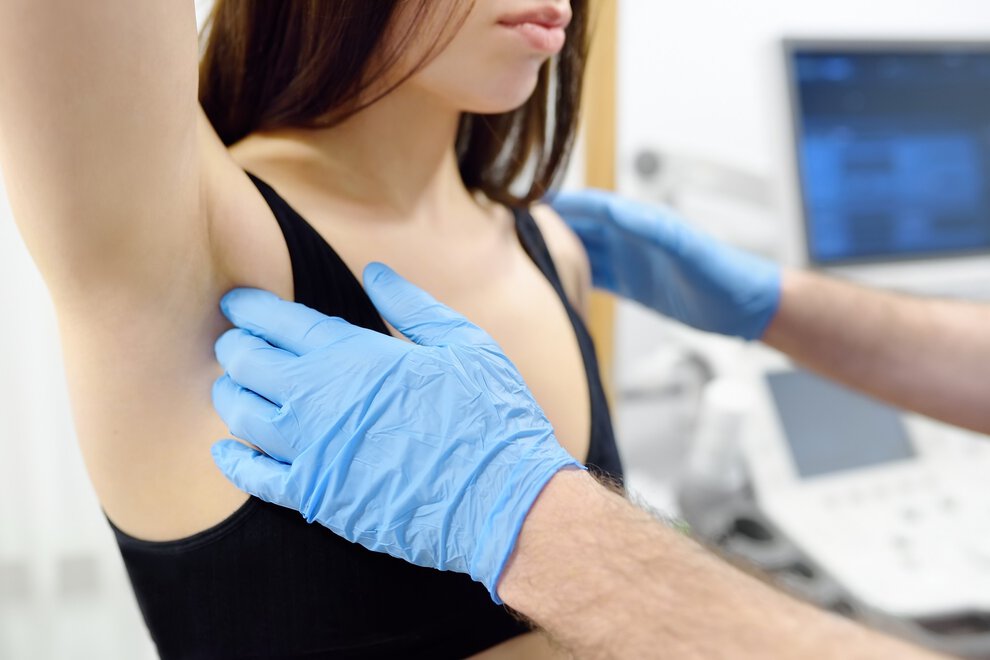Breast Surgery
Whether you're seeking aesthetic enhancement, restored symmetry, or relief from physical discomfort, we offer a full spectrum of breast surgeries.

Today, women who lose one or both breasts to cancer and mastectomy can benefit from state-of-the-art opportunities in reconstruction. At MUSC, we believe each woman should have access to the full range of options including those for implant reconstruction as well as revolutionary techniques for natural tissue reconstruction, which our doctors have helped to advance.
We provide a full range of advanced breast surgery options designed to restore form, balance, and confidence after mastectomy or breast surgery.
Whether you're seeking aesthetic enhancement, restored symmetry, or relief from physical discomfort, we offer a full spectrum of breast surgeries.
If you are having a mastectomy on one side, symmetry procedures may be done on the preserved breast during a secondary stage in the reconstruction process.
Whether you choose to have reconstruction with implants or using your own tissue, our team will help you explore and understand your options.
Your reconstruction may require a tissue expander —an empty silicone envelope with an access port—to be temporarily put in place.
Our procedures include nipple reconstruction and 3D areola tattoos.
Our surgeons can transfer lymph nodes from other parts of the body to alleviate chronic underarm swelling caused by lymph node removal during mastectomy.
We’re to guide you through your options and help you make informed choices—such as whether to delay reconstruction or have it during your mastectomy. Our goal is to ensure you understand every possibility so you feel confident and satisfied with your reconstruction journey.

We’re to guide you through your options and help you make informed choices—such as whether to delay reconstruction or have it during your mastectomy. Our goal is to ensure you understand every possibility so you feel confident and satisfied with your reconstruction journey.
MUSC offers numerous breast reconstruction procedure options. Your doctor can work with you to better determine which procedure is right for you based on your needs.
The timing of breast reconstruction will depend on your circumstances and personal wishes. Some patients are able to have immediate reconstruction at the same time as mastectomy. Others delay reconstruction until after recovery from mastectomy and subsequent cancer treatments.
One of your biggest decisions will be whether to have reconstruction with breast implants – which can be placed easily but have a limited lifetime – or to have reconstruction using your own tissue, which is more involved initially but can offer a permanent solution as well as several other benefits. There are advantages and disadvantages to consider for each.
A unilateral mastectomy involves the removal of one breast, while a bilateral mastectomy involves both breasts. If you have cancer in one breast, you may decide to have the other breast removed at the same time as a cancer prevention measure (prophylactic mastectomy).
If you are having a bilateral mastectomy, you also can undergo reconstruction of both breasts at the same time with the same reconstructive technique, whether you use implants or your own natural tissue. Or you may preserve your natural, cancer-free breast and undergo a symmetry procedure – for example, a breast reduction or breast lift – to ensure that your natural breast looks similar to your newly reconstructed breast.
Acellular dermis is human tissue that is taken from the back of a cadaver and processed in a way that prevents rejection and infection. In recent years, surgeons have started to use acellular dermis as a helpful tool in breast reconstruction.
Following a mastectomy, there is minimal breast tissue left. Acellular dermis incorporates into your own tissue and allows better structural support. Women who delay reconstruction typically have a tissue expander inserted at the time of mastectomy as a space-saver. Acellular dermis is used to create a sling that helps hold the tissue expander in place while also providing an extra layer of tissue between the expander and skin.
When used with implant reconstruction, acellular dermis makes the implant less visible and less likely to be felt under the skin. It can help control the implant’s location, define the breast crease and provide additional tissue for a more natural looking breast.